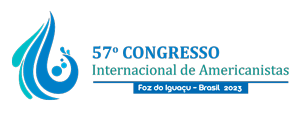| Dados do autor | |
|---|---|
| Sua instituição | Université de Montréal |
| País de origem do autor | Canadá |
| Dados co-autor(es) [Máximo de 2 co-autores] | |
| Sua titulação | Doutor |
| Proposta de Paper | |
| Área Temática | 03. Arte e Patrimônio Cultural |
| Grupo Temático | Historia del arte y la estética de las Américas: global y local |
| Título | Troubling Categories: Latin American Art and Latinx-Canadian Art in Contention |
| Resumo | This paper will discuss outcomes of an ongoing research project, which investigates the historical and current conditions of the insertion of Latin American and Latinx-Canadian artists in the Montreal scene. I will interrogate whether Latin American art’s occurrences in Montreal have either opened doors for artists from this diaspora in this city or, on the contrary, have contributed to the latter's past and ongoing condition of “double subalternity.” What happens when art no longer comes “directly” from the geo-aesthetic region that Latin America has become because their producers no longer reside there nor claim their presence anymore in their places of origin? How does the “departure” of this region transform the perception of these artists in the eyes of the market, artistic institutions, and the public in general? Why is a Latinx-Canadian artist perceived differently (in Canada) than a Latin American artist who still resides and works in one of the countries that integrate this cultural region? I will answer these questions in light of the tension between de- and re-westernization in the so-called globalized art world (Barriendos 2009; Jones 2016); the reinvention of Latin America as a geo-aesthetic category (Barriendos 2009); the role played by the art market in the construction of “Latin American art” as a market and collecting category; the perception of certain regions of the planet, such as Latin America, and its inhabitants, as “authentic,” and the transformation of this condition into one of subalternity when they find themselves in a diasporic situation (Ramirez 1995; Davila 2020); the relationship between (Western) modernity and coloniality of power (Quijano 2007; Castro-Gomez and Grosfoguel 2007; Mignolo and Walsh 2018). The paper can be given in English or Spanish. |
| Palavras-chave | |
| Palavras-chave |
|
